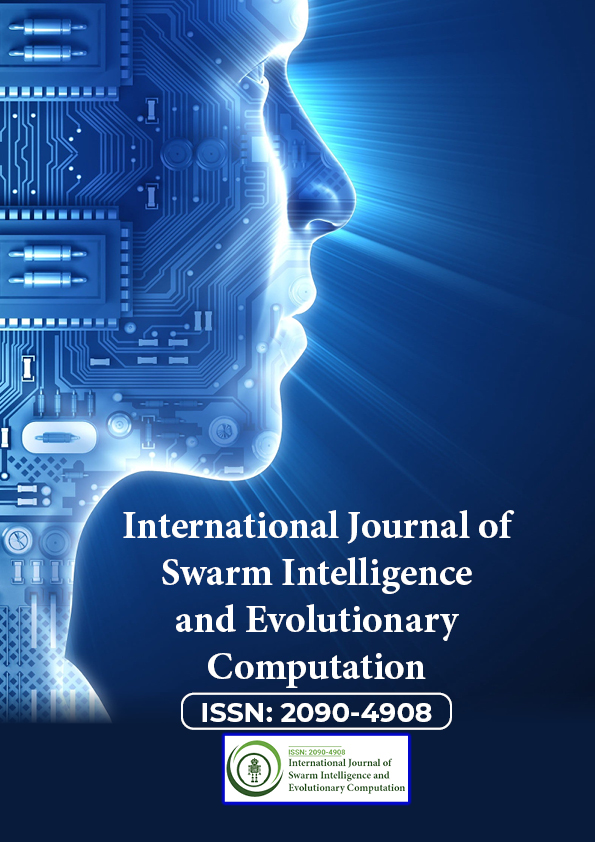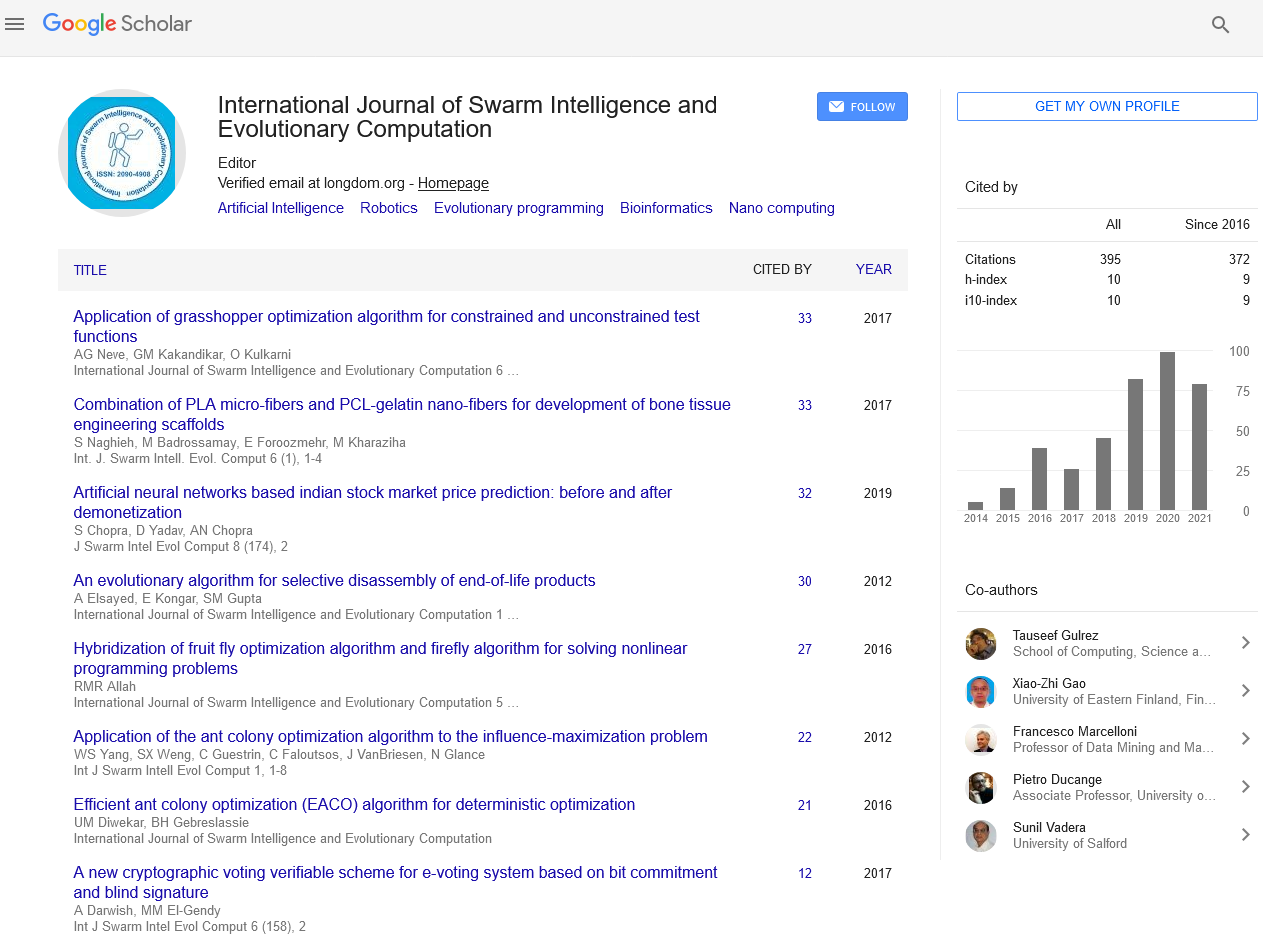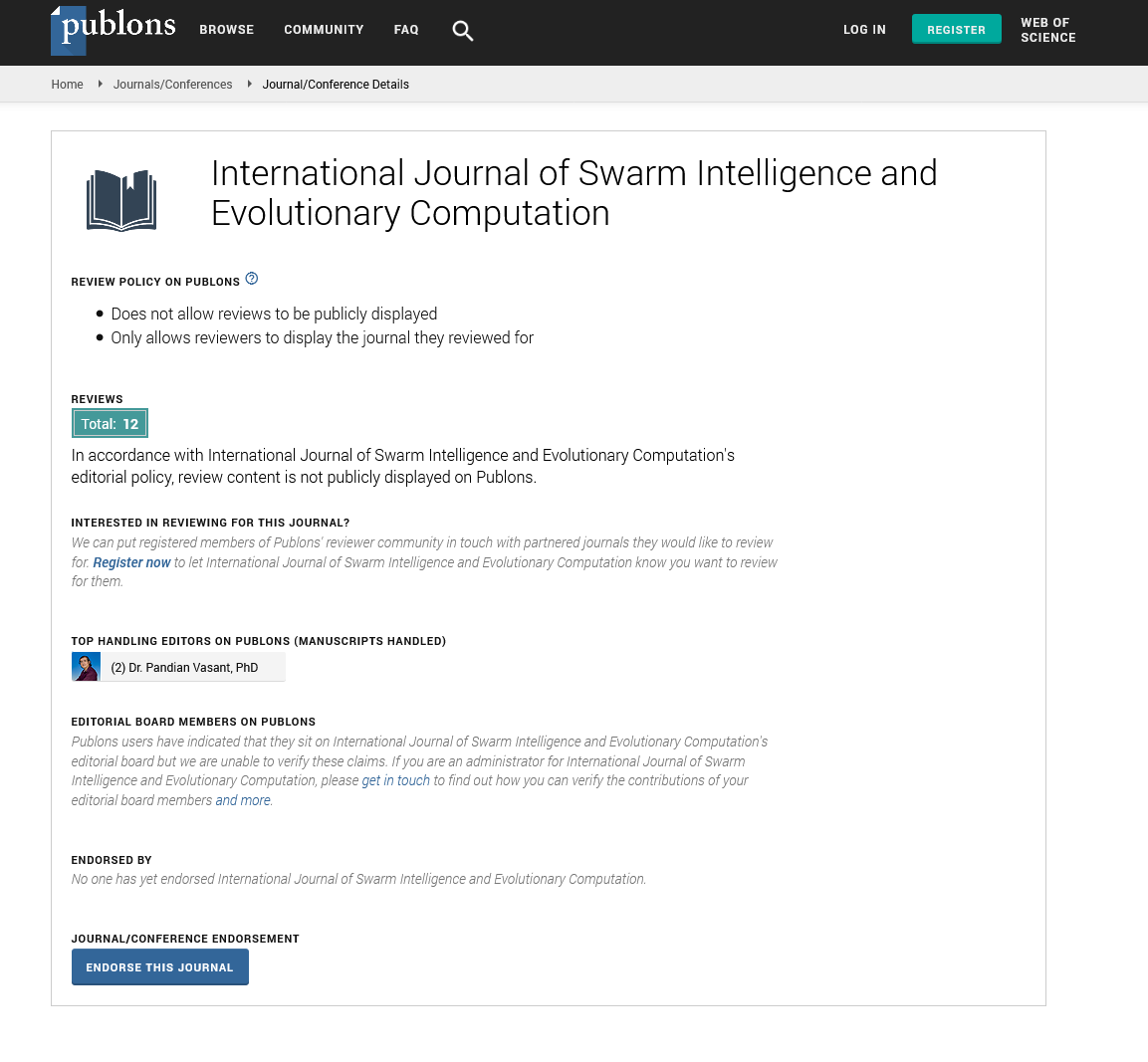Indexed In
- Genamics JournalSeek
- RefSeek
- Hamdard University
- EBSCO A-Z
- OCLC- WorldCat
- Publons
- Euro Pub
- Google Scholar
Useful Links
Share This Page
Journal Flyer

Open Access Journals
- Agri and Aquaculture
- Biochemistry
- Bioinformatics & Systems Biology
- Business & Management
- Chemistry
- Clinical Sciences
- Engineering
- Food & Nutrition
- General Science
- Genetics & Molecular Biology
- Immunology & Microbiology
- Medical Sciences
- Neuroscience & Psychology
- Nursing & Health Care
- Pharmaceutical Sciences
Perspective - (2025) Volume 14, Issue 1
Perspective on Swarm Particle Optimization: A Path to Intelligent Problem-Solving Kim Seokho*
Kim Seokho*Received: 12-Feb-2025, Manuscript No. SIEC-25-28513; Editor assigned: 14-Feb-2025, Pre QC No. SIEC-25-28513 (PQ); Reviewed: 28-Feb-2025, QC No. SIEC-25-28513 (Q); Revised: 07-Mar-2025, Manuscript No. SIEC-25-28513 (R); Published: 14-Mar-2025
Description
Swarm Particle Optimization (SPO), commonly known as Particle Swarm Optimization (PSO), is an advanced computational technique inspired by the collective behavior of biological entities such as bird flocks and fish schools. Since its inception, SPO has gained significant traction in solving complex optimization problems across various fields, including engineering, artificial intelligence, and data science. This article provides a perspective on the strengths, limitations, and future possibilities of Swarm Particle Optimization as a robust tool for problem-solving.
Strengths of swarm particle optimization
One of the most compelling aspects of SPO is its ability to efficiently search for optimal solutions without requiring gradient information. Unlike traditional optimization algorithms that depend on derivatives, SPO functions through stochastic processes, making it highly effective for non-linear, multidimensional, and discontinuous problems. This flexibility allows it to be widely applied in real-world scenarios, including robotics, medical diagnosis, and financial modeling.
Another key strength of SPO lies in its adaptability and simplicity. The algorithm mimics the social interaction of particles, which collectively adjust their positions based on their own experiences and the experiences of their neighbors. This self-organizing mechanism ensures faster convergence toward optimal solutions, reducing computational costs compared to more complex optimization techniques. Additionally, it requires fewer hyperparameters, making it relatively easy to implement and modify for various applications.
Challenges and limitations
Despite its numerous advantages, SPO is not without challenges. One major issue is the balance between exploration and exploitation. If particles converge too quickly, they may get trapped in local optima, failing to find the global best solution. On the other hand, excessive exploration can lead to slow convergence, increasing the computational cost without guaranteeing better results. Researchers continue to develop hybrid models that integrate other optimization techniques, such as genetic algorithms and differential evolution, to mitigate this issue.
Another concern is the algorithm’s performance in highdimensional spaces. As the dimensionality of a problem increases, the efficiency of SPO may decline due to the curse of dimensionality. In such cases, modifications such as adaptive parameter tuning and dynamic neighborhood structures have been proposed to enhance its effectiveness in tackling complex optimization problems.
Future prospects and innovations
The future of Swarm Particle Optimization is promising, with ongoing advancements integrating it with artificial intelligence and machine learning. The rise of deep learning has led to the exploration of using SPO in neural network training, optimizing hyperparameters, and feature selection. Moreover, its application in Internet of Things (IoT) and smart cities demonstrates its potential to improve network optimization, resource allocation, and energy efficiency.
Additionally, the fusion of quantum computing with SPO is an emerging research domain. Quantum-inspired SPO aims to harness quantum principles to enhance solution accuracy and speed, opening new possibilities in computational intelligence. This intersection of quantum computing and swarm intelligence could redefine optimization strategies for solving previously intractable problems.
Conclusion
Swarm Particle Optimization is a powerful tool that continues to evolve, offering efficient solutions to complex optimization challenges. While it faces certain limitations, ongoing research and hybrid approaches are paving the way for its enhanced performance. As industries and researchers continue to explore its capabilities, SPO remains a cornerstone of modern optimization, bridging the gap between biological intelligence and computational problem-solving.
Citation: Seokho K (2025). The Rise of Robotic Intelligence: A Revolution in Automation. Int J Swarm Evol Comput. 14:411.
Copyright: © 2025 Seokho K. This is an open-access article distributed under the terms of the Creative Commons Attribution License, which permits unrestricted use, distribution and reproduction in any medium, provided the original author and source are credited.


